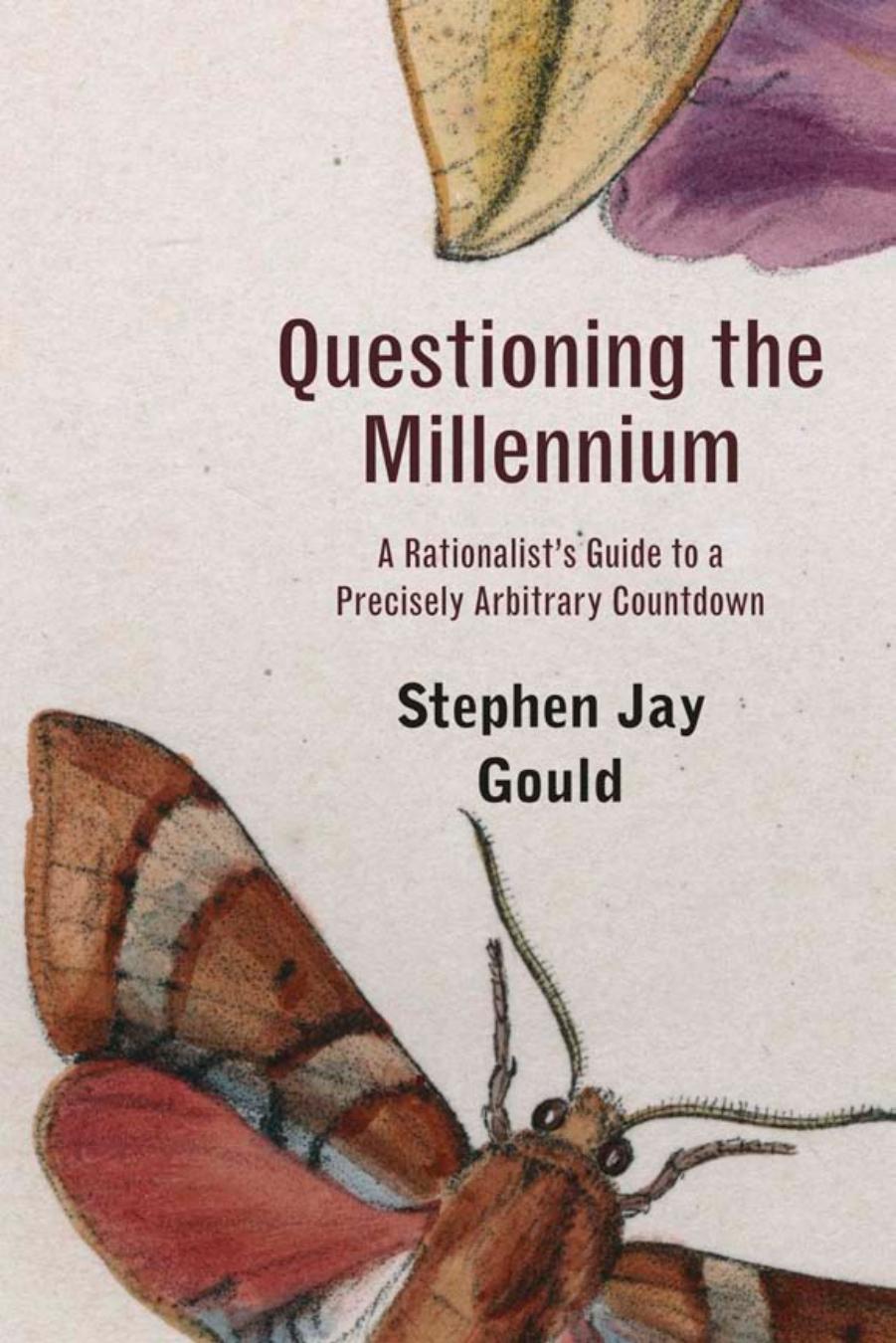Questioning the Millennium by Stephen Jay Gould

Author:Stephen Jay Gould [Gould, Stephen Jay]
Language: eng
Format: epub, pdf
ISBN: 978-0-609-60610-0
Publisher: Harmony Books
Published: 2012-01-10T16:00:00+00:00
The Opening of the Fifth and Sixth Seals, the Distribution of White Garments Among the Martyrs and the Fall of Stars (1498), Albrecht Dürer. Woodcut from The Revelation of Saint John. (illustration credit 1.7)
Happily, the more interesting alternative applies. As I shall show in Part 2, the sixth-century inventor of the B.C.–A.D. system made an unfortunate little error in setting the birth date of Jesus at the crux of his transition. Herod, you see, died in 4 B.C. So if Herod still ruled at the birth of Jesus—and think of how many good stories must disappear if he did not (the slaughter of the innocents, the return of the three magi to their own country)—then Jesus must have been born in 4 B.C., if not earlier. Ussher therefore tacked these four additional years onto his chronology—for theory dictated that exactly four thousand years must pass from the creation to the birth of Jesus, thus setting the beginning of the world at 4004 B.C.
Ussher fully accepted the standard view that exactly six thousand years must pass between the creation and the Second Coming. He performed his calculations partly to determine when the world must end, and in the hope that this blessed millennium would arrive soon enough to fuel human hope, but at a sufficient distance to spare his own life and power. Ussher was also a partisan of the switch from millennium as apocalypse to millennium as calendrics. That is, he advocated the notion that earthly time should be counted in units of 1,000, and that each millennial transition should be marked by a great historical event to signify the overall beauty and internal logic of God’s system—with the last moment, the inception of the true millennium, at exactly six thousand years from creation.
Ussher argued that Solomon had completed his temple at the halfway point of 3,000 years, and that Jesus must appear exactly a thousand years later at 4000 A.M. (Annus Mundi, or “year of the world”). Moreover, Ussher followed the old medieval theory of types that viewed each story in the New Testament as a symbolic replay of an Old Testament event—so that time’s six thousand years formed two great and coincident cycles, with the completion of the second cycle marking the end of business as usual and the advent of the millennium. Thus, although we may now view the bases of comparison as far-fetched or even risible, Mary, when pregnant with Jesus, served as the type of Moses’ Burning Bush—because both held the fire of God within themselves yet were not consumed. And the Resurrection of Jesus must replay the deliverance of Jonah from the whale—because both men were buried in death and darkness, but exited from their tombs on the third day. For Ussher, the birth of Jesus represents the type for the completion of the Temple—the establishment of the new and old orders. A neatly numerical God, working within his six thousand year framework, would surely place these events at two successive millennial cruxes, separated by a thousand years.
Download
Questioning the Millennium by Stephen Jay Gould.pdf
This site does not store any files on its server. We only index and link to content provided by other sites. Please contact the content providers to delete copyright contents if any and email us, we'll remove relevant links or contents immediately.
| Deconstruction | Existentialism |
| Humanism | Phenomenology |
| Pragmatism | Rationalism |
| Structuralism | Transcendentalism |
| Utilitarianism |
The remains of the day by Kazuo Ishiguro(7541)
Tools of Titans by Timothy Ferriss(6934)
The Black Swan by Nassim Nicholas Taleb(6182)
Inner Engineering: A Yogi's Guide to Joy by Sadhguru(5886)
Giovanni's Room by James Baldwin(5870)
The Way of Zen by Alan W. Watts(5787)
The Six Wives Of Henry VIII (WOMEN IN HISTORY) by Fraser Antonia(4784)
The Power of Now: A Guide to Spiritual Enlightenment by Eckhart Tolle(4747)
Astrophysics for People in a Hurry by Neil DeGrasse Tyson(4613)
Asking the Right Questions: A Guide to Critical Thinking by M. Neil Browne & Stuart M. Keeley(4564)
12 Rules for Life by Jordan B. Peterson(3722)
The Ethical Slut by Janet W. Hardy(3494)
Skin in the Game by Nassim Nicholas Taleb(3455)
Housekeeping by Marilynne Robinson(3395)
The Art of Happiness by The Dalai Lama(3376)
Double Down (Diary of a Wimpy Kid Book 11) by Jeff Kinney(3267)
Skin in the Game: Hidden Asymmetries in Daily Life by Nassim Nicholas Taleb(3259)
Walking by Henry David Thoreau(3227)
12 Rules for Life: An Antidote to Chaos by Jordan B. Peterson(3195)
